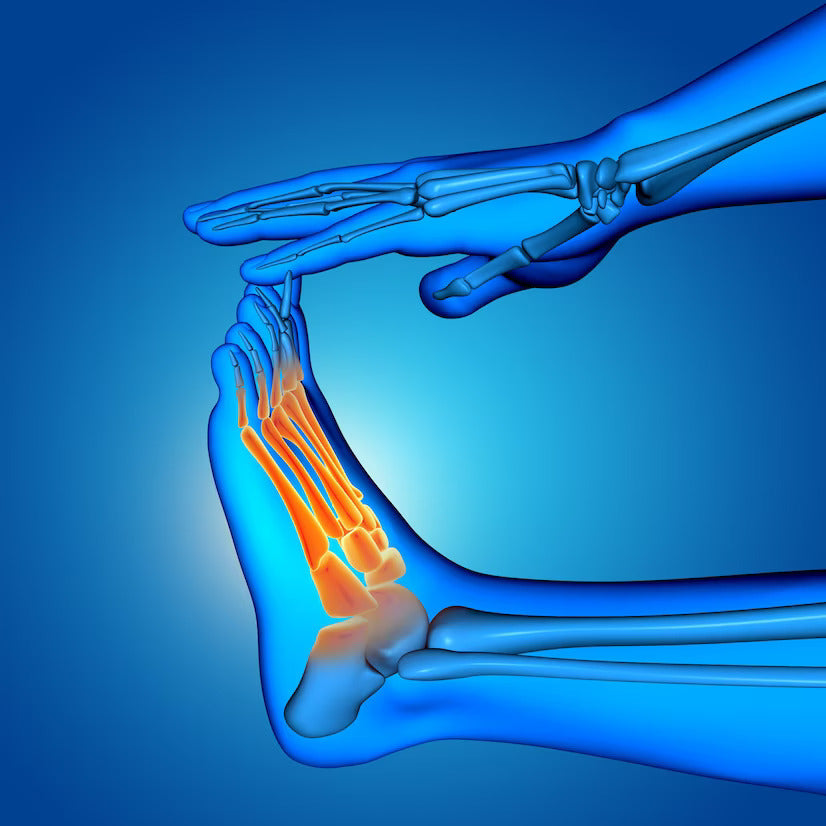
Understanding The Symptoms Of Tarsal Tunnel Syndrome
Share
Introduction
Tarsal Tunnel Syndrome is a condition that affects the foot and ankle area, causing pain, numbness, and tingling sensations. Similar to carpal tunnel syndrome in the wrist, Tarsal Tunnel Syndrome occurs when the tibial nerve, which runs along the inside of the ankle, becomes compressed or irritated. This condition can be quite painful and can significantly impact an individual's ability to walk and engage in daily activities.

In this article, we will dive deep into the symptoms of Tarsal Tunnel Syndrome, helping you understand the indicators that can help identify this condition in its early stages. By recognizing the symptoms and seeking appropriate medical attention, individuals can receive timely treatment and prevent further complications.

1. Understanding the Anatomy of the Tarsal Tunnel
Before delving into the symptoms of Tarsal Tunnel Syndrome, it is essential to have a basic understanding of the anatomy of the tarsal tunnel. The tarsal tunnel is a narrow passageway located on the inside of the ankle, along the inner side of the foot. It is covered by a thick ligament called the flexor retinaculum, which creates the roof of the tunnel. Within the tarsal tunnel, several structures pass, including nerves, blood vessels, and tendons. The most significant nerve passing through this tunnel is the tibial nerve, which is responsible for providing sensation and controlling the movement of the muscles in the foot and toes.
2. Common Symptoms of Tarsal Tunnel Syndrome
The symptoms of Tarsal Tunnel Syndrome can vary from person to person, depending on the severity and underlying causes. However, there are several common signs that individuals should be aware of. These symptoms typically occur along the path of the tibial nerve and may include:
- Pain: One of the primary symptoms of Tarsal Tunnel Syndrome is pain. This pain can manifest in different ways, such as a burning sensation, shooting pain, or a dull ache. It is often felt along the inside of the ankle, the bottom of the foot, or the arch area. The pain may worsen with prolonged standing or walking.
- Numbness and Tingling: Individuals with Tarsal Tunnel Syndrome may experience numbness or tingling sensations in the affected area. These sensations are commonly felt in the bottom of the foot or the toes. The numbness and tingling may come and go or persist for extended periods.
- Weakness: As Tarsal Tunnel Syndrome progresses, individuals may notice weakness in their foot or ankle. This weakness can make it difficult to perform activities that require strength or balance, such as walking or climbing stairs.
- Swelling: Some individuals with Tarsal Tunnel Syndrome may experience swelling around the ankle area. This swelling is often accompanied by discomfort and tenderness.
- Radiating Pain: In severe cases, the pain from Tarsal Tunnel Syndrome may radiate up the leg or down into the toes. This radiating pain can be sharp and intense and may make it challenging to pinpoint the exact location of the discomfort.
3. Differentiating Tarsal Tunnel Syndrome from Other Conditions
It is crucial to differentiate Tarsal Tunnel Syndrome from other conditions that may present similar symptoms. Some conditions that share common symptoms with Tarsal Tunnel Syndrome include:
- Plantar Fasciitis: Plantar Fasciitis is a condition characterized by inflammation of the plantar fascia, a band of tissue that connects the heel to the toes. While both Tarsal Tunnel Syndrome and Plantar Fasciitis can cause pain in the foot, the location and nature of the pain differ. Plantar Fasciitis pain is typically centered on the heel, while Tarsal Tunnel Syndrome pain is concentrated along the inside of the ankle but may irradiate through the foot.
- Peripheral Neuropathy: Peripheral Neuropathy refers to damage or dysfunction of the nerves outside the brain and spinal cord. While it may cause symptoms similar to Tarsal Tunnel Syndrome, Peripheral Neuropathy can affect various parts of the body, not just the foot and ankle area but in the dermatomes correspondent to the injured nerve.
- Achilles Tendinitis: Achilles Tendinitis is a condition characterized by inflammation of the Achilles tendon. It can cause pain, tenderness, and stiffness in the back of the heel and ankle. Although the location of pain may overlap with Tarsal Tunnel Syndrome, Achilles Tendinitis pain is typically concentrated at the back of the ankle, while Tarsal Tunnel Syndrome affects the inside of the ankle.
4. When to Consult a Healthcare Professional
If you experience any of the symptoms associated with Tarsal Tunnel Syndrome, it is crucial to seek medical attention promptly. A healthcare professional, such as a podiatrist or orthopedic specialist, can evaluate your symptoms and perform a thorough examination to diagnose the condition accurately. They may also order imaging tests, such as an MRI or nerve conduction studies, to confirm the diagnosis and determine the extent of the injury.
Author Bio

Marlene Carvalho
Certified Sports Physiotherapist of Elite and Olympic athletes; Performance Coach to racing drivers
Marlene Carvalho is a sports physiotherapist passionate about all things sports.






